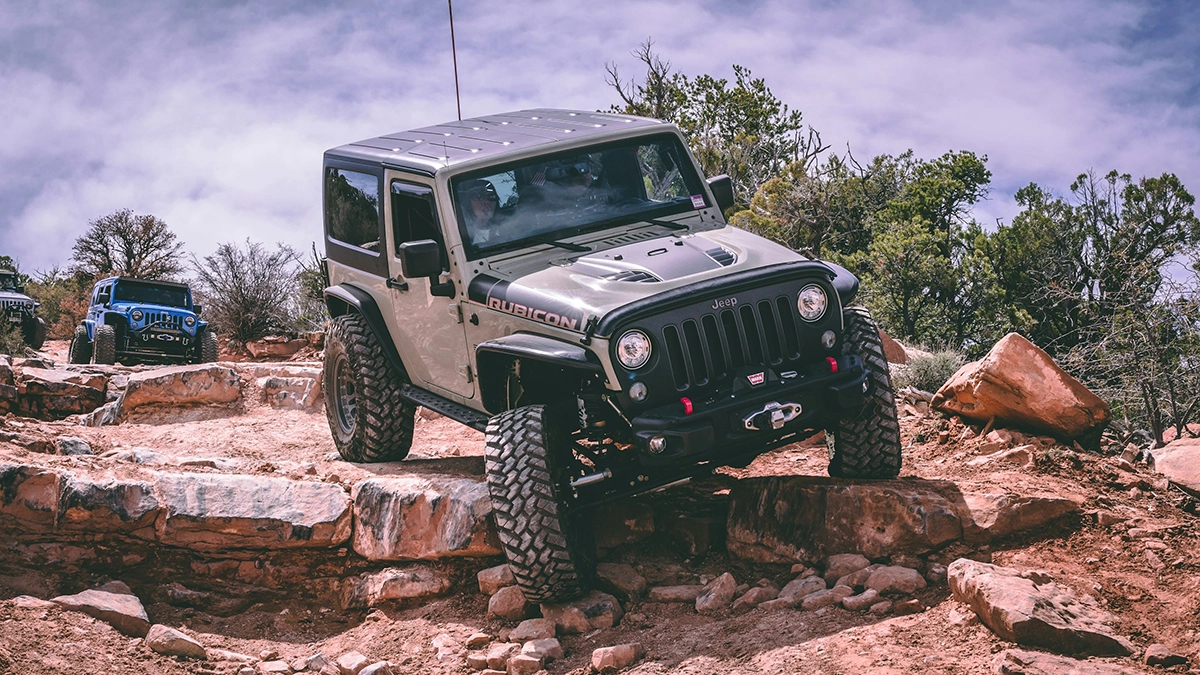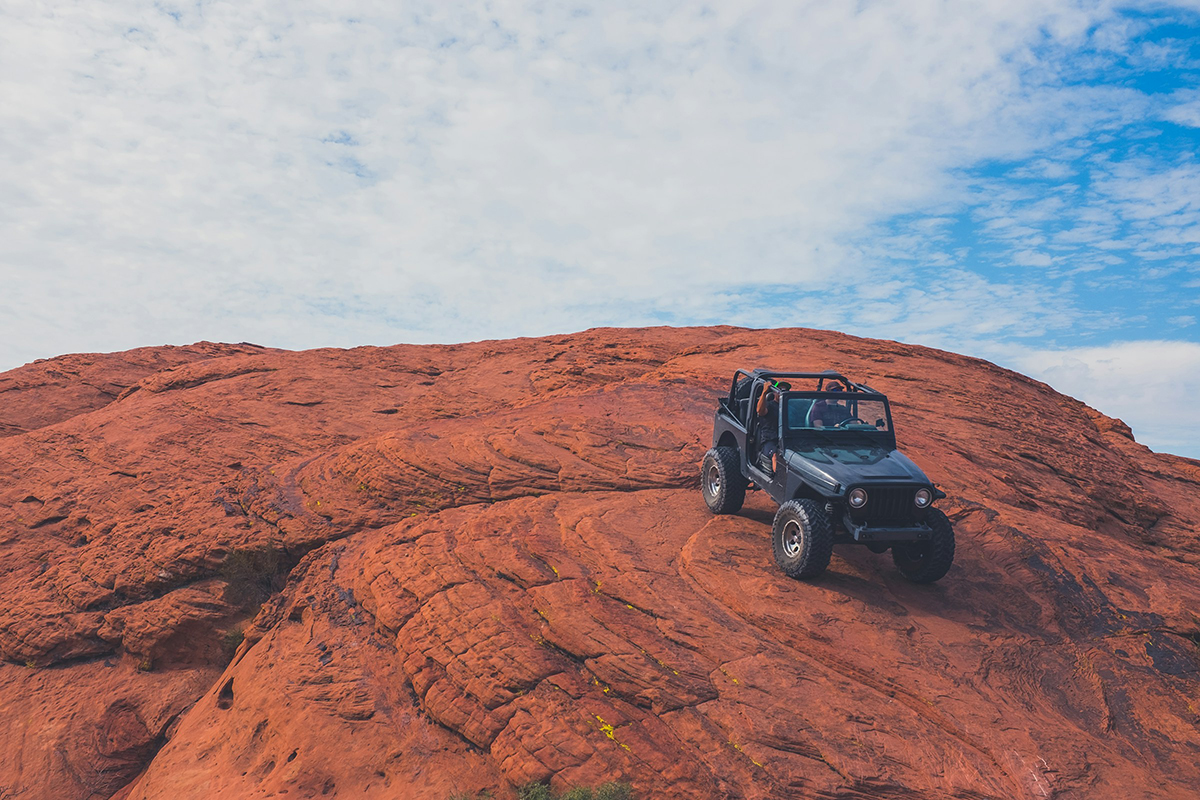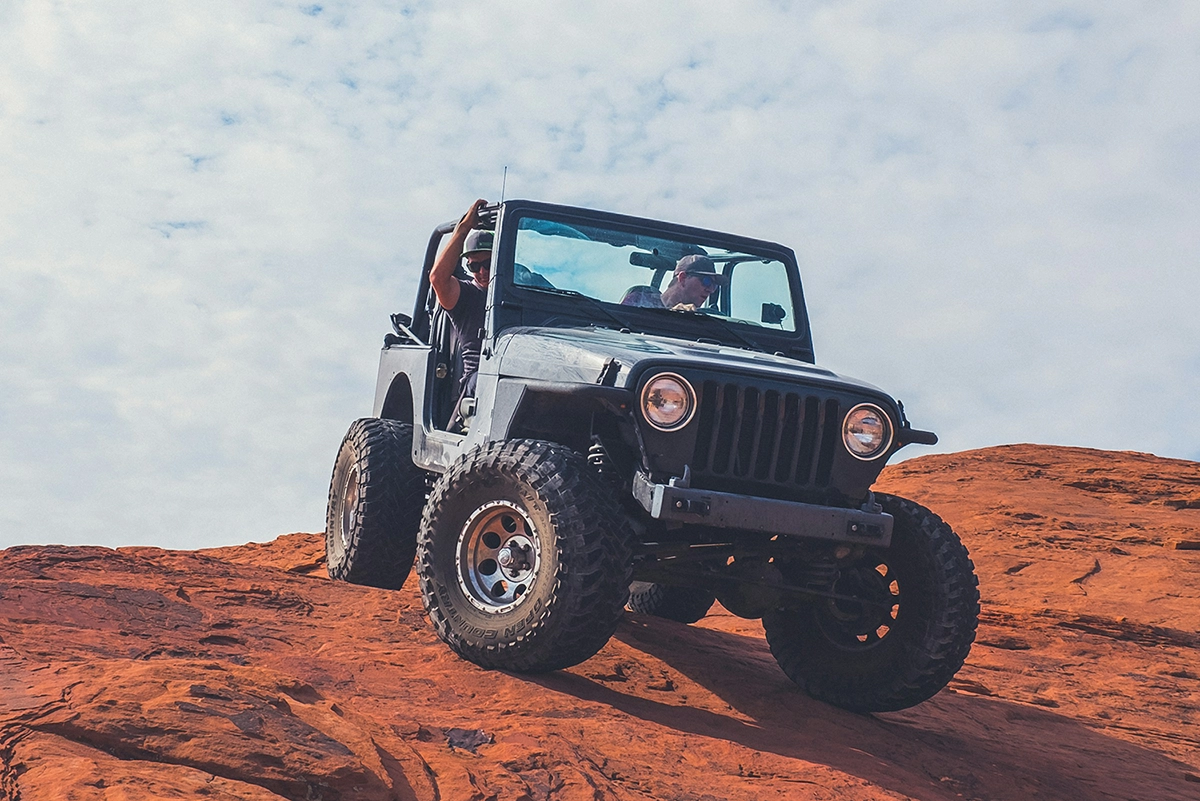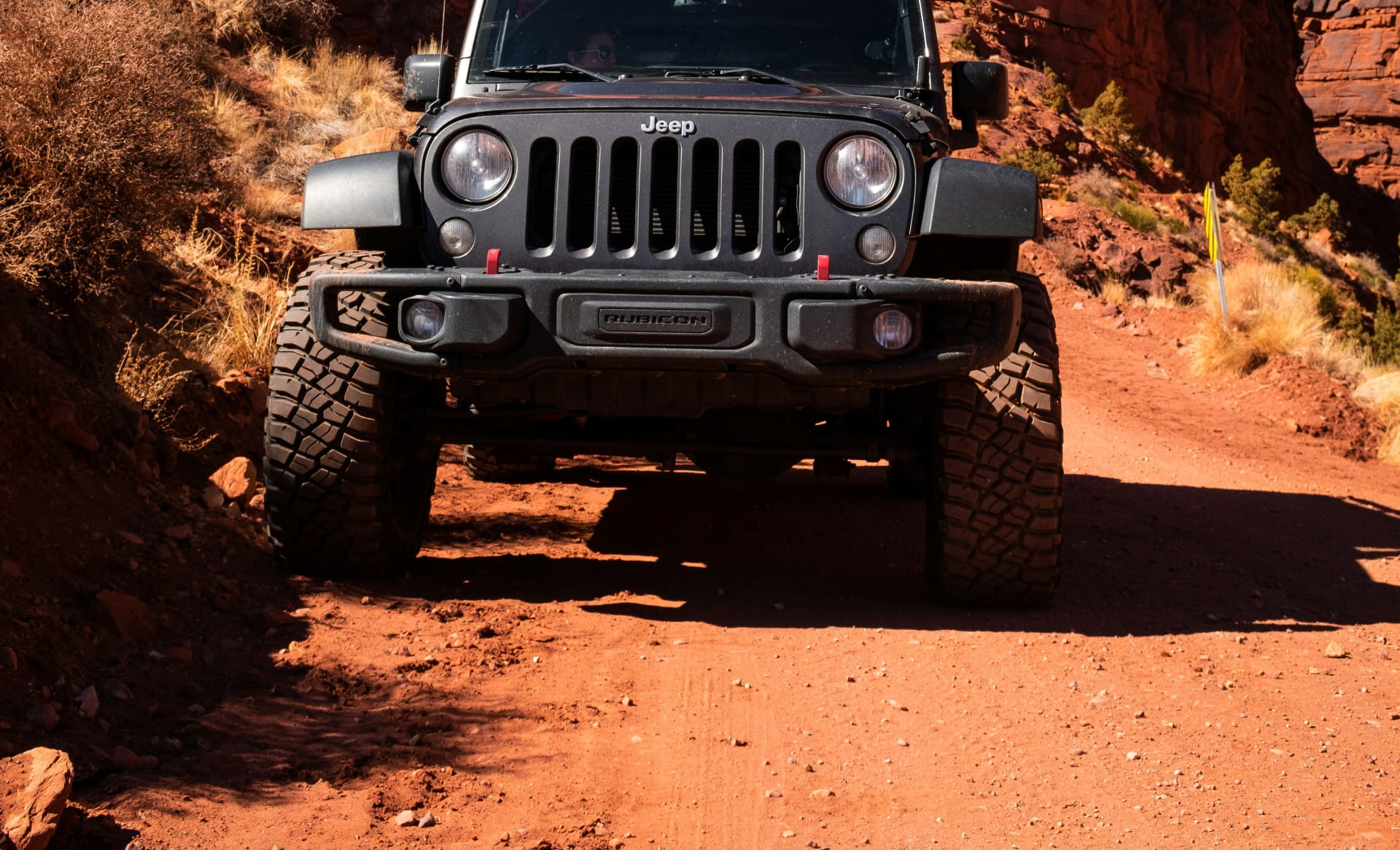What Makes Hell's Revenge Worth Your Time
The reality of this trail cuts through the marketing hype. While plenty of Moab routes promise adventure, Hell's Revenge delivers something different: a genuine test of both machine and driver wrapped in some of the most striking red rock scenery you'll find anywhere. This isn't about collecting trail badges or Instagram shots—though you'll get both. It's about understanding what your vehicle can actually do when the pavement ends and the real world begins.
The Trail's Character and What You're Actually Getting Into
Hell's Revenge runs roughly 6.5 miles through a landscape that seems designed by someone with a twisted sense of humor and an appreciation for geological drama. The slickrock here isn't just pretty—it's functional, offering traction where you'd least expect it and challenging your assumptions about what's possible with four wheels.
The trail starts deceptively calm before revealing its true nature through a series of climbs, descents, and sidehills that will recalibrate your relationship with gravity. You'll encounter sections where the path disappears entirely, leaving only painted dots on stone to guide you through terrain that looks more like abstract art than a driving route.
Vehicle Requirements: What Actually Works (And What Doesn't)
High clearance isn't just recommended here—it's physics. You'll need at least 8 inches, though 10 or more keeps things interesting rather than expensive. Four-wheel drive becomes non-negotiable once you're past the first mile, not because the marketing materials say so, but because the laws of traction demand it.
Tire choice matters more than most people realize. All-terrain treads work, but they'll make you work harder. The slickrock rewards contact patch over aggressive tread, which means your street tires might surprise you while your mud-terrains might leave you spinning.
Stock vehicles handle this trail regularly, but modifications help. A modest lift, skid plates, and rock sliders shift the experience from white-knuckle to genuinely enjoyable. The goal isn't to build a rock crawler—it's to have enough capability that you can focus on the experience rather than the potential for expensive noises.

Reading the Rock: How Slickrock Actually Works
Slickrock earned its name from early horsemen, not modern drivers. What feels impossibly smooth provides surprising grip, but only if you understand its rules. Clean rock grips; sandy rock slides. Wet rock becomes ice; dry rock holds like glue.
The white painted dots marking the route aren't suggestions—they're the result of decades of trial and error by people who learned the hard way where vehicles can and cannot go. Following them saves both your undercarriage and your pride.
Temperature affects everything. Morning rock feels different than afternoon rock. Spring conditions differ from summer ones. The stone itself changes with the seasons, not dramatically, but enough to notice if you're paying attention.
Notable Obstacles and What They'll Teach You
The trail presents several named obstacles that serve as informal checkpoints for measuring your progress and confidence. Each one offers a different lesson in vehicle dynamics and personal comfort zones.
Hell's Gate appears early enough to establish the trail's personality without committing you to anything truly consequential. It's steep enough to get your attention but forgiving enough that mistakes don't require a tow truck.
The Escalator section demonstrates how slickrock can work in your favor when approached correctly and against you when rushed. The key lies in understanding momentum versus control—too little speed leaves you sliding backward, too much leaves you sliding sideways.
Several unnamed but equally memorable sections will test your ability to read terrain and trust your equipment. These moments separate confident drivers from merely competent ones.
Timing Your Run: When Weather and Crowds Actually Matter
Summer brings heat that transforms metal surfaces into branding irons and makes waiting in exposed areas genuinely uncomfortable. Spring and fall offer moderate temperatures that let you focus on driving rather than survival.
Winter runs are possible but require different skills. Snow and ice change everything about how the rock behaves, turning confident climbs into careful exercises in patience and technique.
Weekends mean crowds, which means waiting, which means planning for delays. Early morning starts help, but they won't eliminate the social aspect entirely. Weekday runs offer more solitude but require flexible schedules.

Safety Considerations That Actually Keep You Safe
Bringing water isn't optional here—it's basic survival planning. The desert doesn't care about your schedule, and vehicle breakdowns happen in places where cell service resembles Swiss cheese.
Communication plans matter. Someone should know where you're going and when you expect to return. Satellite communicators make sense for groups serious about remote travel.
Recovery gear proves its worth when everything goes sideways. A simple tow strap and basic tools handle most situations, while more complex equipment adds capability at the cost of complexity.
What You'll Actually Remember
Hell's Revenge doesn't just test your driving—it changes how you think about what's possible with a vehicle. The trail strips away assumptions about where you can and cannot go, replacing them with a more nuanced understanding of traction, momentum, and machine capability.
The views provide context for everything else. This isn't just about conquering obstacles; it's about experiencing landscape that puts human engineering in perspective. The red rock formations here predate anything we've built by millions of years, which adds a certain humility to the whole experience.

Getting There and Getting Started
Access begins at the Sand Flats Recreation Area, where paying the entrance fee also gets you a trail map that's actually useful. Parking fills up during peak times, so early arrival prevents disappointment.
Trail conditions change with weather and use, so checking current status before heading out saves time and frustration. Local shops provide current beta along with any required permits or passes.
The trail connects to other routes for those wanting to extend their adventure, but Hell's Revenge stands alone as a complete experience. You don't need to chain multiple trails together to justify the drive to Moab—this single route provides enough variety and challenge to fill a day.
Why This Trail Matters
In a world increasingly dominated by virtual experiences and artificial challenges, Hell's Revenge offers something genuinely real. The obstacles don't level up based on your skill progression, and the consequences of poor decisions feel immediate and concrete.
The trail serves as a measuring stick—not just for vehicle capability, but for personal comfort with uncertainty and challenge. It's a place where confidence gets calibrated against actual ability, where marketing claims meet physical reality, and where the difference between knowing something and understanding it becomes clear.
This matters because genuine challenges are becoming rare. Hell's Revenge provides one that's accessible yet real, technical yet achievable, and memorable in ways that stay with you long after the dust settles.
Experience Hell's Revenge Without the Equipment Commitment
Not everyone owns a vehicle ready for slickrock adventures, and that's perfectly reasonable. Building trail capability takes time, money, and garage space that many people simply don't have. Flying into Moab with your daily driver isn't exactly practical either.
Cliffhanger Jeep Rentals solves this problem with vehicles specifically prepared for Hell's Revenge. Their fleet includes properly equipped Jeeps with the clearance, traction, and protection systems that make the difference between struggling through obstacles and flowing over them confidently.
These aren't basic rental cars with four-wheel drive stickers. Each vehicle comes set up with appropriate tires, skid plates, and recovery points. The suspension works with the terrain rather than against it, and the clearance numbers actually mean something when rocks start scraping.
Local expertise comes included. The Cliffhanger team knows Hell's Revenge intimately and can match vehicle capability to your experience level. They understand which obstacles challenge beginners versus those that require more developed skills, and they'll set you up accordingly.
This approach lets you focus on the experience rather than the equipment. Instead of wondering whether your vehicle can handle what's ahead, you can concentrate on learning to read the rock, understanding slickrock traction, and developing the confidence that comes from driving something properly prepared.
For visitors serious about experiencing Hell's Revenge as it was meant to be driven, renting the right equipment locally makes more sense than compromising with whatever you happened to drive to Utah. The trail deserves proper preparation, and Cliffhanger Jeep Rentals provides exactly that.


